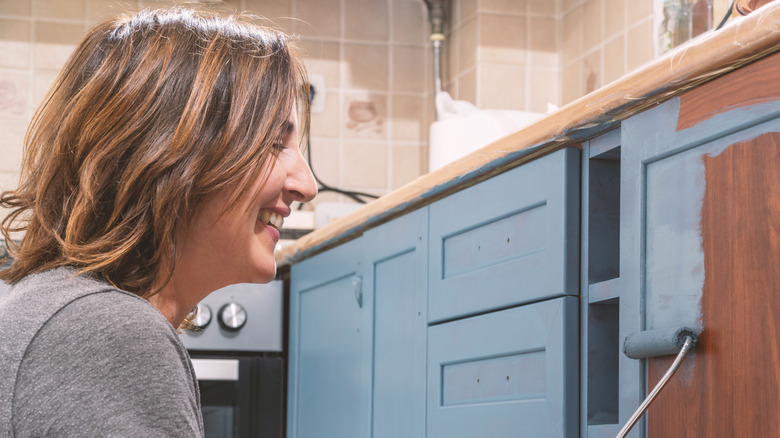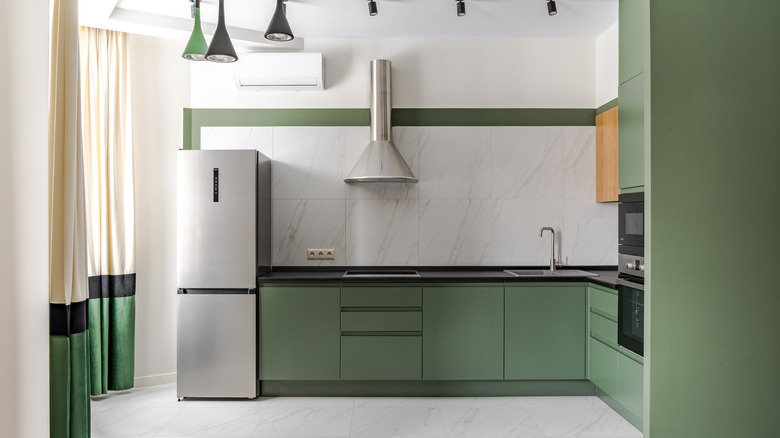The Accent Color Trick That Fixes An Outdated Kitchen Instantly
The kitchen is a communal space that often sees family and friends gather. As one of the busiest rooms in the house, it's essential to make sure the space is attractive and comfortable. Much of the kitchen's ambience lies in the colors that occupy the room, so incorporating the right tones is important. Finding the perfect colors for your kitchen will keep the space fresh and functional, while also making a stylish statement.
The days of an all-white kitchen are over as single-toned spaces have become outdated and boring. Utilizing one color throughout the kitchen will make the space feel stale and lifeless. Now is a great time to experiment with color by picking an accent hue to reenergize the room. You'll want to make sure you are utilizing the tone wisely by not misguidedly overusing your selected shade. Rather than letting your accent color cover an entire wall, it is best to incorporate your desired color sporadically in different ways. This will properly show off the color's versatility and establish a continuous style throughout the kitchen.
Update your kitchen with pops of color
Fresh, eye-catching colors make all the difference in your kitchen. Is there a rich color that you love, but have been cautious to use heavily in your space? Now may be the perfect time! Choose what your accent color will be, and experiment with different shades and tones in that pigment.
In other words, don't choose a single color and take it throughout the kitchen. Too much of the same color may feel suffocating and won't give off the stimulating feeling of cohesion that is needed in a kitchen space. Instead, find ways to incorporate different tones of your accent color and use them in varying degrees. This could mean balancing the color with pieces of decor, like utensils, towels, and table runners. Or consider painting the inside of your pantry or cabinets to add a playful pop of color where you'd least expect it.
The point is to make sure your color choice really stands out and delivers on multiple style fronts without feeling overpowering. Varying tones of the same color will add extra dimension and will allow you the freedom and fun that comes with utilizing several hues. Even though you're relying on a specific color to accent, you'll feel like you're using multiple colors by applying them in assorted shades throughout the kitchen.
How to pick the right accent color for your kitchen
The key to adding a pop of color to your kitchen is choosing an accent hue that makes sense in your space. First, look around your kitchen and take note of the light. Does natural light come in through windows, or do you have recessed lighting? On her blog, Martha Stewart recommends painting a sample of your desired accent color on a small poster board, then taking a day to move the poster board around your kitchen at various times. Observe how the light changes throughout the day and how that impacts the look of your accent color in the space.
Remember that since this is an accent rather than the kitchen's main color, make sure to select a tone that will not feel overpowering. For example, a vivid saturated color could overwhelm the room and make the kitchen feel darker. Blues and greens are wise choices for accent colors, but remember that rich neutrals like taupe can work as well. Ty Pennington offered his best advice for choosing the perfect accent color by praising the use of a color wheel. The visual tool will show what each color has to offer and how they complement other hues. This can also help you establish different color palettes that you may want to utilize in your kitchen or in other spaces of the home.


